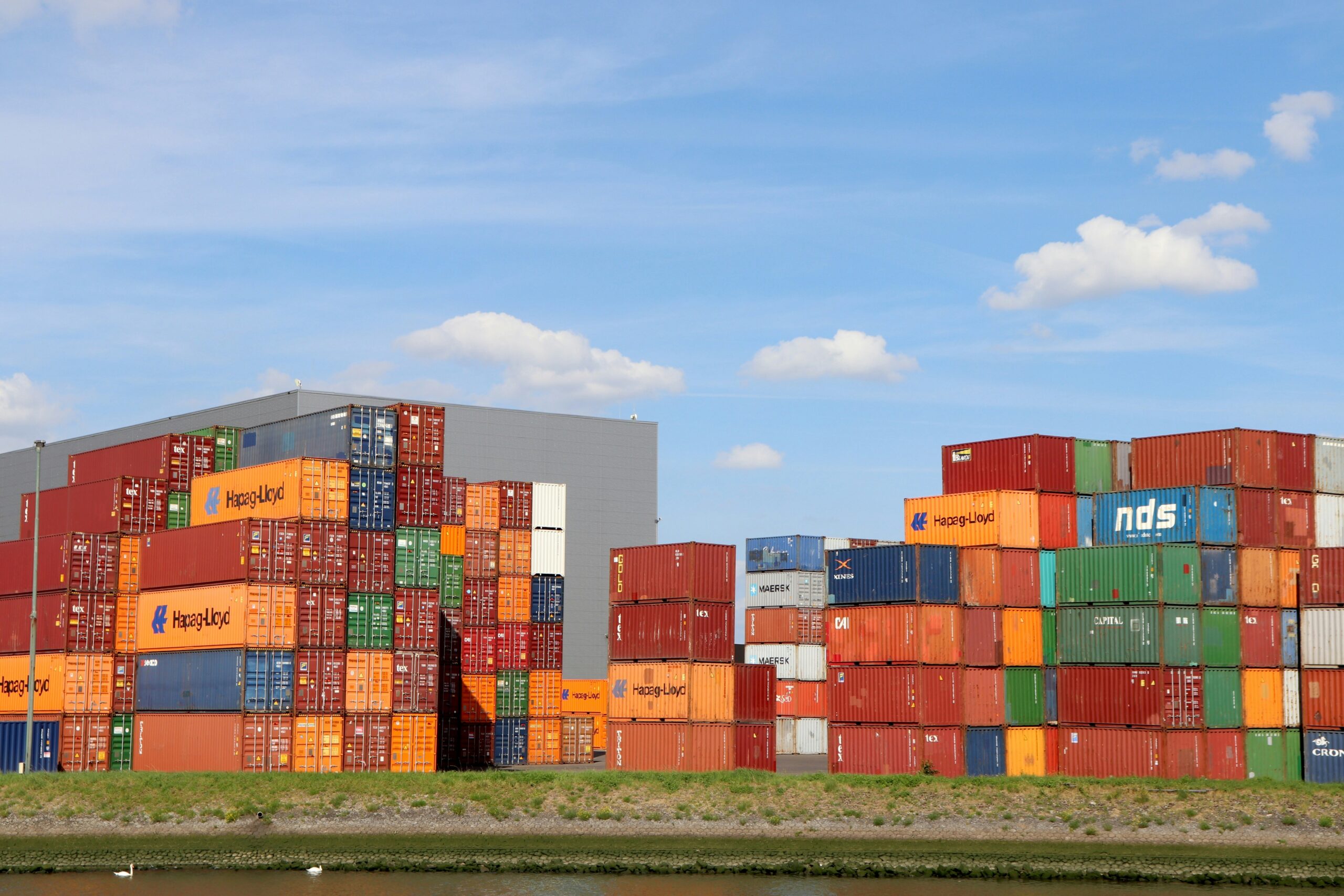
The Cloud Triad: Scaling eCommerce, Securing Data, and Maximizing Performance
The Cloud Triad: Scaling eCommerce, Securing Data, and Maximizing Performance
As a seasoned observer of digital infrastructure, I’ve tracked the shift from dedicated servers to the dizzying heights of hyperscale cloud environments. For the largest enterprises, this complexity is manageable—they have the dedicated operations teams to tame the Kubernetes kraken. But what about the millions of small and medium enterprises (SMEs), the ambitious eCommerce managers, and the agile digital agencies who are the backbone of the global digital economy? They need the benefits of hyperscale infrastructure—speed, reliability, and security—without the crushing operational overhead.
Today, success is no longer a matter of simply existing online. It’s about delivering an experience defined by a crucial trifecta: robust **eCommerce scalability**, impeccable **cybersecurity for SMEs**, and relentless **website speed**. This is the Cloud Triad, and failure in even one area can turn a promising growth trajectory into a costly, immediate crash. The infrastructure layer, often treated as a necessary evil, is now the primary differentiator between market leaders and those struggling to keep pace.
This article will dissect the challenges faced by growth-focused businesses attempting to navigate modern cloud complexity and show how embracing a simplified, production-ready environment—a true Stacks As A Service model—is the only sustainable path forward.
Pillar I: The Performance Mandate—Why Speed is the Ultimate Conversion Metric
We can no longer discuss web performance as a secondary concern. It is foundational. A site that takes three seconds to load instead of one sees a significant drop in user engagement and conversion rates. For an eCommerce business, this translates directly to lost revenue, cart abandonment, and reduced Customer Lifetime Value (CLV).
Decoding Core Web Vitals (CWV) for Business Success
Google’s Core Web Vitals (CWV)—specifically Largest Contentful Paint (LCP), First Input Delay (FID, now being replaced by INP), and Cumulative Layout Shift (CLS)—are not technical acronyms for developers alone. They are measurable business metrics that define your search ranking visibility and user experience quality. A poor LCP means customers wait too long to see the main product image; high INP means the site feels sluggish and unresponsive; high CLS means trust is broken by elements jumping around.
While front-end optimization (image compression, code splitting) is essential, true performance mastery starts at the server level. You can tune your application code endlessly, but if the underlying platform is slow, resource-constrained, or suffering from network latency, your **website speed** ceiling is inherently low.
- The Database Barrier: Is your database isolated, optimized, and fast enough to handle concurrent requests during peak hours?
- Resource Contention: Are you on shared hosting or a poorly managed Virtual Private Server (VPS) where other tenants are silently stealing your resources?
- Global Delivery: Do you have the infrastructure necessary to efficiently distribute content globally without complex, manual CDN configurations?
To consistently meet high CWV standards, businesses need an environment built for performance from the ground up—one that guarantees dedicated resources and utilizes modern containerization techniques to maximize execution speed and minimize latency. This level of optimization should be a feature of your infrastructure, not a painful, ongoing project.
Pillar II: Taming the Traffic Tide—Achieving True eCommerce Scalability
The eCommerce world operates in cycles: flash sales, seasonal peaks, and sudden viral spikes. For an SME, scaling often means frantic, last-minute calls to increase CPU cores (vertical scaling), which quickly hits an expensive and finite limit. True **eCommerce scalability** requires horizontal scaling: seamlessly spinning up new instances of your application stack to distribute the load instantly.
Horizontal scaling is the domain of sophisticated orchestration tools, most famously Kubernetes. Kubernetes is, without question, the industry standard for production-grade scaling and resiliency. But here is the stark reality for the average digital agency or SME owner:
“Kubernetes is powerful, but its steep learning curve, complex configuration management, and inherent operational costs make it inaccessible and dangerous for those who lack a dedicated, high-cost DevOps team. Trying to implement raw Kubernetes for a single Magento or WooCommerce store is often financial and technical suicide.”
The business goal is reliable, automatic scaling. The traditional cloud tools, however, deliver complexity. This is the chasm that modern infrastructure must bridge.
The Promise of Stacks As A Service (STAAS)
The future of infrastructure for growth-focused businesses is the elimination of this complexity barrier. Imagine an environment that utilizes the power and efficiency of Kubernetes-like containerization standards (CNCF) but abstracts away the overwhelming management layer. This is the premise of Stacks As A Service.
For platforms like **STAAS.IO**, the value proposition is clear: you get the necessary production-grade architecture (horizontal scaling, resource isolation) without needing a PhD in YAML configuration. Businesses can deploy their applications via CI/CD pipelines or even a one-click process, knowing that the environment itself is already configured for high availability and instant burst capacity.
Crucially, achieving enterprise-level scaling shouldn't lead to billing anxiety. Whether you need to scale horizontally across multiple machines to handle a massive influx of holiday shoppers or vertically add more RAM to a single database instance, platforms designed for simplicity, like STAAS.IO, offer predictable, transparent pricing. This removes one of the major friction points of migrating to complex cloud infrastructure: the fear of unpredictable vendor billing.
Pillar III: Fortifying the Digital Frontier—Cybersecurity for SMEs
While large corporations grab the headlines, SMEs are increasingly targeted because they often represent easier entry points into supply chains or simply because their defenses are perceived as weaker. For an eCommerce platform, a successful breach means regulatory penalties, catastrophic reputational damage, and massive costs associated with recovery and customer notification.
When discussing **cybersecurity for SMEs**, we must look beyond basic firewalls and SSL certificates and examine the infrastructure architecture itself.
The Crucial Role of Isolation and Persistent Storage
In legacy shared hosting or poorly configured public cloud environments, resource isolation is weak. One compromised neighboring tenant can sometimes affect others. Modern containerization, when properly implemented, offers a stronger security boundary by default.
However, many container platforms complicate the fundamental need for data security: reliable, durable **persistent storage**. Applications need persistent volumes to store databases, user uploads, and session data. If your cloud platform sacrifices native persistent storage capabilities for quick deployment gimmicks, you compromise both data integrity and compliance posture.
A true managed cloud platform must guarantee:
- Full Native Persistent Storage: Ensuring data remains secure and accessible, adhering to robust backup and recovery protocols, and complying with stringent containerization standards (CNCF).
- Isolation by Design: Utilizing dedicated resources and network segregation to prevent lateral movement of threats between different stacks or clients.
- Proactive Management: Handling the patching, configuration, and monitoring of the underlying operating system and virtualization layers, which is often the source of major infrastructure exploits.
This is where specialized platforms excel. By offering production-grade environments that bake in security features and reliable, full native persistent storage and volumes, businesses gain peace of mind. The responsibility for maintaining the complex security landscape of the infrastructure shifts from the SME’s small technical team (or agency) to the managed cloud provider.
The Solution: Why Managed Cloud Hosting and Stacks As A Service Prevail
The confluence of demands—blazing speed (CWV compliance), unlimited scaling (peak traffic readiness), and enterprise-grade security (data protection)—cannot be met reliably or affordably by cobbling together DIY cloud components. The time spent troubleshooting infrastructure is time taken away from developing features, marketing products, and serving customers.
This is why the market is shifting decisively towards solutions that bundle high-performance infrastructure, security, and scalability into a consumable service. This is the definition of advanced **managed cloud hosting**, evolved into the Stacks As A Service model.
STAAS.IO: Shattering Complexity for Production Readiness
The mission of platforms like **STAAS.IO** is to simplify what was previously reserved only for Silicon Valley unicorns. We’re talking about an environment where:
Freedom from Lock-in is paramount: Adhering to CNCF containerization standards ensures that your stack is portable. This is critical for agencies and large businesses who value flexibility and the freedom to move if necessary. Vendor lock-in is a financial and strategic liability we actively dismantle.
Deployment is immediate: Whether you use integrated CI/CD pipelines for complex multi-stage rollouts or opt for a simple one-click deployment for a standard eCommerce setup, the path from code to production is frictionless.
Costs are predictable: Scaling horizontally (adding more servers) or scaling vertically (adding more CPU/RAM to existing servers) is handled under a simple, consistent pricing model. This allows business owners and finance teams to forecast infrastructure costs accurately, a feature often absent in usage-based cloud pricing structures.
The goal is to provide a quick, cheap, and easy environment that scales instantly to production requirements. For digital agencies, this means faster client launches and fewer late-night infrastructure emergencies. For eCommerce managers, it means confident readiness for Black Friday without requiring a massive, upfront investment in DevOps talent.
The difference between standard hosting and a true Stacks As A Service platform is the promise of instant production reliability. You are not buying a virtual machine; you are buying a guaranteed, managed path to high performance and high security.
Conclusion: The Next Decade of Infrastructure
The modern digital landscape is unforgiving. Customers expect instantaneous service, search engines penalize slow sites, and cyber adversaries relentlessly target weaknesses. For SMEs and agencies, maintaining the delicate balance of the Cloud Triad—speed, scaling, and security—is the single greatest operational challenge today.
The solution does not lie in adopting more complex tools, but in adopting smarter, simpler platforms. By choosing advanced **managed cloud hosting** solutions built on modern standards, businesses can offload the burden of infrastructure complexity and refocus on their core competency: growth, innovation, and serving their customers. The era of DIY infrastructure is over; the era of simplified Stacks As A Service is here to stay.
— Call to Action (CTA) —
Tired of Complexity? Build, Deploy, and Manage with STAAS.IO.
If you are an eCommerce manager dreading the next traffic spike, or a digital agency professional frustrated by complex cloud configurations, it’s time to explore infrastructure that just works.
STAAS.IO offers the power of Kubernetes-like scaling and production readiness without the operational nightmare. Experience seamless CI/CD integration, full native persistent storage, and predictable pricing designed for growth.
Stop paying for complexity. Start building stacks that scale seamlessly.
Visit STAAS.IO today to learn how we shatter application development complexity and simplify Stacks As A Service for everyone.




